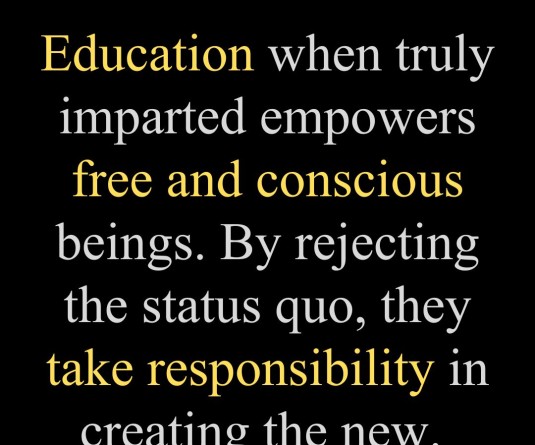
Dr John Mohan Razu
India, the largest democracy in the world has added one more stud as the world’s most populous country amongst the comity of nations. United Nations data shows India is world number one in population which grew by 1.56% to reach 142.86 crore, overtaking China which is at 142.57 crore. It has been predicted that India would reach this figure only in 2027, however, reached four years earlier (2023). The changes in the population growth om the one hand have sparked dystopian future for India, while on the other promised utopian grandeur. However, population growth or control are viewed through the prism of British economistThomas Malthus.
According to Malthus, human population grows rapidly (geometrically) than food production (mathematically).So, he advised the governments not to offer subsidies and welfare schemes especially for the poor and the vulnerable who tend to be the main cause for population growth. Similarly, there are other theories to liquidate those who are old, weak, and seen as good for nothing and unproductive should be eliminated from the face of the earth. They are like parasites and so do not have an ‘use-value’. If we go by Malthusian conception of population, he viewed overpopulation as a burden and to avoid a grim future he advocated population control along with other measures.
To respond to the new status that India has acquired, we are supposed to take a closer look at two aspects: 1) demographic conditions, rate of fertility growth and decline, nature of population growth and its variables and composition, and 2) socio-economic, and 2) socio-economic and health parameters that takes into account the political template as well. Therefore, it is imperative for the Indian Government to conduct the decennial census to define the socio-economic composition of its population to devise strategies for converting the demographic into opportunity.
“Population is often viewed only through the consumption angle. Population is a resource that is the key to production and consumption, considered the two engines of an economy. However, the story surrounding our demographic conditions can’t be understood wholly based solely on population size. It rather depends on the population’s age composition.” For instance, the age structure provided by the UN Population Prospects 2022 for India suggests that “India is passing through a “window of demographic opportunity”, where its working age population (15 to 64 years)…considerably greater compared to its dependent population (0-14 years and 65+years). Currently, 68% of India’s total population is between the ages of 15 and 64 … This vast “demographic bonus” for the country.”
“India can harness the opportunity to rise as an economic superpower, supplying more than half of Asia’s potential workforce over the coming decades.” On similar lines, Amitabh Kant argues that “India has just surpassed China to become the most populous country in the world can be frame another way – by 2030, over one billion Indians will be within the working age group of 15-64. This will position India as a powerhouse of human capital and the largest producer of human resources in the world. This presents us with an unprecedented opportunity to leverage our phenomenal demographic dividend.”
There are however two-sides to a coin as India is placed on top. A big cohort of working age populace is a huge positive or could be perhaps a dangerous negative as well. Contrarians to the above views tend to demolish by saying that it is not quantity, but quality.If we take China,over two centuries it has been considered as the world’s most populous country. India will be overtaking China of being world’s most populous country on July 1, 2023. Nonetheless, it is predicted that India’s demography will keep pushing growth. At the same time, China’s shrinking population will further shrink in the coming decades. The reversal of changing demography will have to be viewed critically with a caveatlinking to the quality of the human capital or resources. Nevertheless, tapping and harnessing the human resources are to be seen.
Though we have huge human resources in India, a question that arise: Is our labor force “high-caliber””? If at all India wants to reach or compete with other industrialized economies which is blessed with 254 million cohort aged 15-24 yearsconsidered as “talent dividend”, but in reality, it is like two-sides of the same coin: 1) lack of job opportunities, and 2) job-worthiness. For instance, those who are qualified in their respective field do not get jobs in the same field, but take up jobs that do not represent their professional aspirations.
Over and above, in India, the combined lack of jobs and job-worthiness implies when compared to the farm sector’s share in the country’s employed labor force continues to be over 45%, but its contribution in terms of GDP is under 20%. We will have to reckon with the fact that India’s predominant labor force depend on agriculture and agricultural-related activities. Though there have been radical shifts or transitions taking place in the developing and developed countries – such as from agriculture-to-industrial-to-manufacturing, India posits a slow progression.
In tune to the changing templates these countries the government at the Centre in recent times has started to introducing and imparting skilling of labor force and professionalism in higher-levels of education. In reality, the Government at the Centre informed in the Parliament that between 2014-2022 it had given 700,000 jobs to 220 million applicants – that is a ration of 0.32%! So, when political leaders feed the Sarkari job mania, it is really discontent they are feeding among the people especially amongst the youth between 21 and 35 age group who those who subscribe to ‘dividend’.
Even if the fifth largest economy inexorably rolls on to become the fourth and third largest with time and a growing population, high unmet per capita needs will threaten its peace and harmony. Around 40% labor force participation rate, around 10% for women, as indicated by CMIE surveys, is a ticking social bomb.It is interest to bring in China’s dividend ratio. China vociferously says that it comprises of both quality and quantity, which means it is not just the size, but also content.
“Size matters, but what matters more is talent resource …” Nearly 900 million out of the 1.4 billion Chinese are of working age and on average have receive 10.9 years of education. For those who have newly entered the workforce, their average length of education has risen to 14 years …asserting that China’s demographic dividend hasn’t ended.” Nevertheless, if we do not respond and address to the “demographic dividends”, then India will obviously pushed to “demographic disaster.” It could either be “boon” or “bane”.





